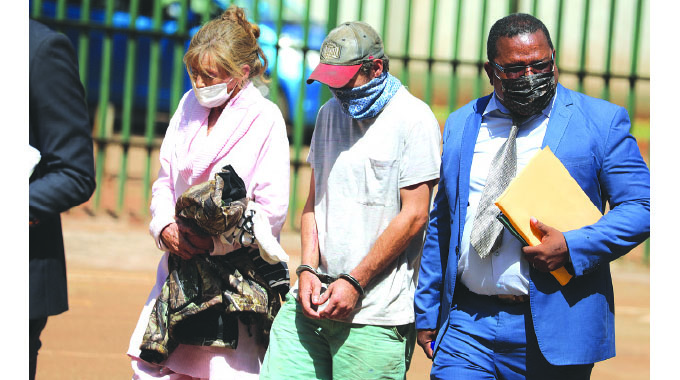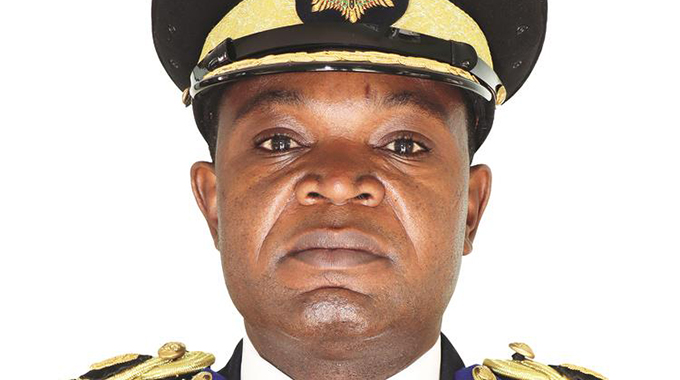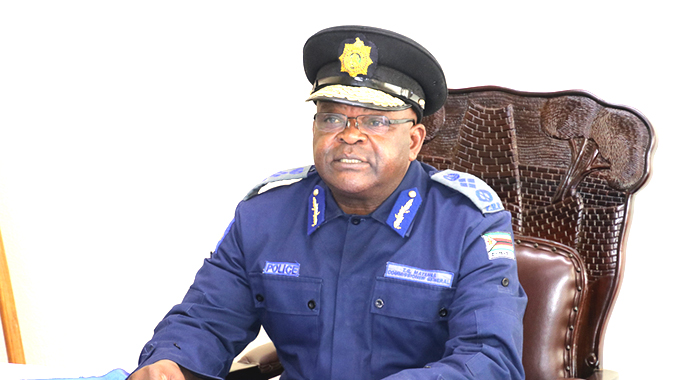Whispers from beyond the grave. . . spirits solve own murder puzzles

Elliot Ziwira
Senior Writer
Miffed by how the living seem to bungle on restorative and restitutive justice, spirits have not been dampened by the 21st Century and its information superhighway in their quest to solve their own murder puzzles.
Mysteries surrounding murders and the reasons behind them have been known to engulf communities in both grief and fear, particularly where the perpetrators are not brought to book, hence, the intervention of spirits in balancing the scales of justice.
Across cultures, there is always that grisly murder case which eludes logic, remaining unresolved for generations, leaving the community horrified, loved ones heartbroken and the police flummoxed as justice is etched on the receding horizon.
Hungry for justice, the community searches deeper into its pockets of collective memory to determine what could have happened to one of its own, whose departure was neither premeditated nor explicable? Without closure, the wounds remain fresh with each day bringing more questions than answers.
Waking up to the sight of a lifeless loved one sprawled out in a pool of blood, with eyes gouged out, face smashed in, stomach sliced open and limbs hacked with hacksaw precision, the community is immersed in both sorrow and fear. With the only witnesses being the all-seeing and voiceless moon, gleaming like a huge diamond on black velvet, and tweeting honey bird, the killer walks scot-free.
Thus, the story is told from one generation to another of how vivacious Tete Mwanaka lost the inevitable battle with the Grim Reaper in such horrendous circumstances on her wedding night. All fingers pointed to her ostensibly jealous ex-boyfriend Chomi, but he had an alibi as bright as the moonlight on a cloudless night in August.
It may as well be the story of Sekuru Tau, who cheerily left home one summer morning for his daily rendezvous with toil to bring grub to his family’s table, but never came back. He just disappeared from the face of the earth, leaving no footprints behind. Or that of Mukoma Barnabas, who was butchered to death in the community’s glare for a yet to be disclosed misunderstanding. Curiously, the long arm of the law could not reach his assailants’ abode, for that reason or the other.
In all instances, the handle on the story remains loose, and the lid refuses to close.
Defeated by reason and seemingly shunned by conventional laws of fairness, the confounded community appeals to karma to locate the murderer and say to him/her: “My name is justice, follow me!”
Then one wintry morning, an eerie whisper is heard from beyond the grave, imploring the living to take heed. Searching in its memory bank again, the community awakens to the reality that has always been known: human life is sacrosanct, for Man is a spiritual being.
When the dead take the lead in settling scores with the living, the story takes a controversial twist in which standing on the fence is as precarious as taking sides. Through collective memory, the community knows that finally the honey bird has recalled the night of that ghastly and surreal night.
Closure may be at hand, but that might as well be the beginning of gnashing and gnawing of teeth, for spirits are known to be vengeful, unforgiving and uncompromising where restorative and restitutive justice is concerned.
When such stories are told, there are those who rubbish them, preferring the solace of science, logic or even religion, but all the more they will listen to give vent to their own fears. There are those who readily believe, having experienced the macabre reel-outs first-hand; and those hankering on the fringes willing to be convinced.
And the spirits are unperturbed by either race, ethnicity or turn of centuries! But will the living take heed? Will they ever listen?
For starters, there is a story before the courts in Zimbabwe, involving a mother, who allegedly connived with her son to kill her other child sometime in January this year. In an attempt to cover up the murder, the duo buried the body in a shallow grave in their backyard in Borrowdale, Harare. His crime: being a drug addict, abusive and violent.
Tracy Samantha Carr (55) and her son, Norman Tyron (32) were apprehended for the murder of Dylan whom they allegedly shot through the latter’s pull on the trigger. After wrapping the deceased in a blanket and disposing of his cadaver, the duo forgot about the issue, assuming the world would also forget about Dylan.
However, Dylan, no matter the effect of his misdemeanours on the psyche of his mother and brother, sought justice from the shallow grave barely two months later. His brother Tyron, it is said, became feverish in hospital after being involved in an accident, and admitted to the killing, leading to the discovery of Dylan’s body and the pair’s subsequent arrest.
The duo will be back in court on March 26.
The import of this reference is to situate the issue of spirits interacting with the living for the sake of justice across cultures, since it involves a white Zimbabwean family.
In his article titled “Spirits can solve their own murders” published in Sunday Guardian Live on October 26, 2019, Veenu Sandal made reference to an Indian “sweet looking, articulate, well-regarded lady” who allegedly killed six family members over a period of several years by administering cyanide to them until she was exposed through one misstep.
Pointing out that evidence was still to emerge on whether the victims were involved in seeking justice, Sandal contends that victims of unnatural death always ensure that the “truth is revealed and will not rest in peace till due punishment is meted out.”
He maintains: “Each spirit chooses its own mode of bringing the truth to light. For example, some choose to appear in a relative or friend or someone’s dream or directly before them and narrate the details of what happened to them. Some spirits force the culprit to make an admission of their guilt. In fact, there are several oft cited cases where the law has been guided by a spirit.”
No matter the circumstances of their untimely deaths; either through violence or poisoning, victims will seek justice in several ways, only that the living sometimes fail to get the message. They need closure to their own stories too, so that they move forward to the other side of life unfettered.
For peace to prevail and restitutive justice to be meted out, there is a need to consider the yearning voices of the dead, for it is this that heals wounds and reconciles families, as the following examples attest to.
The story of Anne Walker
When Anne Walker, who lived in Chester-in-the-Street, County Palatine of Durham, England, was murdered sometime in 1681, her spirit could not find peace until her killers were arrested, charged and hanged. Soaked in blood, with five open wounds on her head, Walker’s apparition waylaid one James Grime (pronounced Graham), a miller, one midnight a fortnight later.
She told him her name, and that she was murdered by Mark Sharp using a pickaxe on the instruction of her relative, Mr Walker, a man of good standing, by whom she was pregnant. Walker had lied to her that he would send her to a private place and look after her. She described to Grime how she was killed and where her body was buried; and attempts Sharp made to conceal evidence of the deed.
Anne Walker cautioned: “And now James Grime I am come to you, that by revealing this bloody act my murderers may be brought to justice; which unless you do, I will continually pursue and haunt you.”
She, indeed, appeared to Grime on two more occasions, as he dithered on taking the message to the Justice of Peace, refusing to believe it. Following the dead young woman’s pleas and threats, he eventually went to the authorities with the horrific news. The identified pit was combed, and Anne Walker’s body was found.
Walker and Sharp were apprehended, tried, convicted by a jury and sentenced to death by Judge Davenport.
It is said that the foreman of the jury saw a child on Walker’s shoulders during the trial, and the judge was described as “under such a concern and uneasiness” that he immediately rose and passed the death sentence on the prisoners as soon as the verdict was pronounced, which was unusual.
Hysteria strikes nine women from one family
As reported in The Herald, in January 1998, the spirit of a murdered man decided to pay the family of his killer a visit in Chief Mangwende’s domain of Murehwa to settle scores for a deathly wrong done in Bulawayo in 1958. On the occasion, nine women married into the same family became hysterical, leading to another member to confess to a murder he committed 40 years earlier.
According to the police, villagers in Juru Village were left dumbfounded when they saw the nine women behaving strangely. They had all lost their senses and were climbing trees and making a lot of noise. Chief Mangwende was informed and several traditional healers were called in to handle the situation.
The man who refused to be buried
When Moses Chokuda was murdered on March 22, 2009, he “refused” to be buried for two years and seven months, tormenting his killers and forcing two of them to convert to Christianity. Reportedly, he would sometimes be seen seated on his metal coffin or other coffins in the mortuary at Gokwe Hospital, as attempts to bury him failed, with his father, Tawengwa saying he was “fighting his own war”.
His father demanded 70 head of cattle, US$15 000 and a young woman as compensation from then Midlands Governor Jason Machaya, whose son, Farai and three others; Abel Maposa, Edmore Gana and Bothwell Gana were convicted of Chokuda’s murder. High Court Judge Justice Nicholas Mathonsi, on circuit in Gweru, sentenced the four to 18 years in jail in 2011.
Moses was accused of breaking into Farai Machaya’s Green Diamond Supermarket at Gokwe Centre with the help of two other men, Isheunesu Sibanda and Leeroy Ndokwana.
Read the full feature on www.herald.co.zw
Following discussions with the Chokuda family, mediated by Chief Njelele, Machaya, paid 35 head of cattle and US$15 000, even though his son committed the crime with three accomplices.
Chokuda’s body was finally buried in Chipere Village, Gokwe on October 29, 2011.
Spirit of murdered child haunts family 57 years on
In a case reminiscent of Tapiwa Makore’s, who was murdered for ritual purposes aged seven, allegedly by his uncle’s herdsman in September last year and is still to be buried, three-year-old Bezel Chakanyuka Chiunya of Makuvaza Village in Chief Mangwende’s realm of Murehwa was killed for the same motive in 1960.
However, in 2017, 57 years later, Chakanyuka’s spirit sought justice from the family of one of his killers. The spirit spoke through Innocent Cheza (27), grandson to the late Solomon Cheza who supposedly murdered Chakanyuka abetted by his friend Simon Mutandwa Gotora, also late, to boost his farming enterprises.
The spirit exposed details of the murder one afternoon when the child was left at home in the company of other children after their parents had gone to a funeral wake in the area. Upon their return, the parents conducted a search for their son with the assistance of other villagers, but it yielded nothing except more pain, anxiety and regret.
The case was reported to the police, but it remained unresolved for close to six decades.
Chakanyuka’s spirit revealed that his body was hidden in the killer family’s granary, after rituals were performed by a traditional healer.
Chakanyuka’s parents died before their son’s quest for justice.
While Solomon Cheza’s widow admitted to the killing, as she recalled how her husband came home with his clothes drenched in blood, Gotora’s widow, who was 82 in 2017 denied her late husband’s involvement.
The Cheza family paid 14 head of cattle and a goat to the Chakanyukas as compensation to bring closure to a 57-year-old puzzle, and afford Chakanyuka peace.








Comments